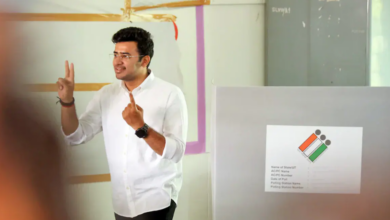Was a temple razed in Ayodhya? What the stones say
Opponents of the Ram Mandir in Ayodhya are quoting the Supreme Court to say that there is no evidence that a temple was razed to build the Babri Masjid. What does the archaeological evidence dug out say about the history of the Janmabhoomi site?

The historical and archaeological contours surrounding the Ram Mandir Temple and Babri Masjid in Ayodhya have been subjects of intense scrutiny, particularly in light of excavations conducted by the Archaeological Survey of India (ASI). This exploration delves into the archaeological evidence and its implications for understanding the historical narrative of the site.
Archaeological Survey of India Excavations: Unearthing the Past The ASI excavations at Ayodhya have been pivotal in unraveling the layers of history surrounding the Ram Mandir Temple and Babri Masjid. Key findings include:
- Structural Remains: The excavations unearthed structural remains that suggest the presence of a large and significant structure beneath the Babri Masjid. These findings raised questions about the origins and historical layers of the disputed site.
- Artifacts and Pottery: The discovery of artifacts and pottery fragments during the excavations provided valuable insights into the material culture and chronology of the site. Analysis of these items contributed to understanding the historical timeline of Ayodhya.
- Historical Significance: ASI’s excavations indicated that the site held historical significance predating the construction of the Babri Masjid. The presence of a large structure and artifacts hinted at the potential existence of a revered structure, aligning with the belief associated with Lord Ram‘s birthplace.
Historical Context: Tracing the Chronology of Ayodhya Understanding the historical context is crucial in evaluating the significance of ASI’s excavations:
- Ancient Ayodhya: Ayodhya, an ancient city with deep-rooted cultural and religious associations, has been a focal point in Hindu mythology and historical texts. It is believed to be the birthplace of Lord Ram, a revered figure in Hinduism.
- Babri Masjid Construction: The construction of the Babri Masjid in the 16th century added a layer to Ayodhya’s history. The mosque became a center of religious and political significance, leading to a complex socio-religious landscape.
- ASI’s Role: The ASI’s involvement in excavations aimed to unravel the layers of history and provide empirical evidence about the existence of structures predating the Babri Masjid, contributing to the broader discourse on the disputed site.
Implications and Ongoing Dialogue:
- Legal Ramifications: The archaeological findings have played a crucial role in the legal proceedings surrounding the Ayodhya dispute. Courts have considered the evidence presented by the ASI in their judgments, shaping the legal outcome of the case.
- Interfaith Dialogue: The Ayodhya issue has sparked interfaith dialogue and discussions about coexistence. Efforts to reconcile historical perspectives and promote harmony have gained traction.
- Construction of Ram Mandir: The recent construction of the Ram Mandir marks a significant chapter in Ayodhya’s history. The temple’s establishment reflects a culmination of religious, cultural, and legal dimensions, shaping the socio-religious fabric of the region.
The archaeological excavations by the ASI at Ayodhya have provided a nuanced understanding of the historical layers surrounding the Ram Mandir Temple and Babri Masjid. As Ayodhya embraces a new era with the construction of the Ram Mandir, the historical narrative continues to evolve, influenced by archaeological insights and ongoing dialogue.




